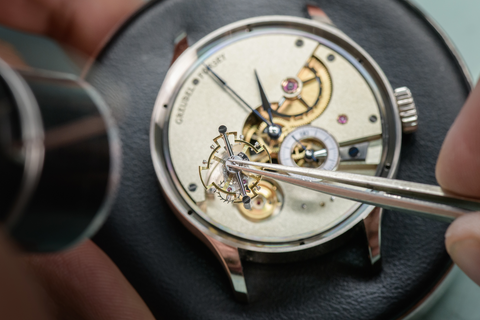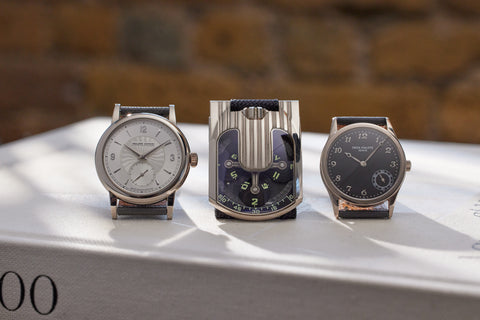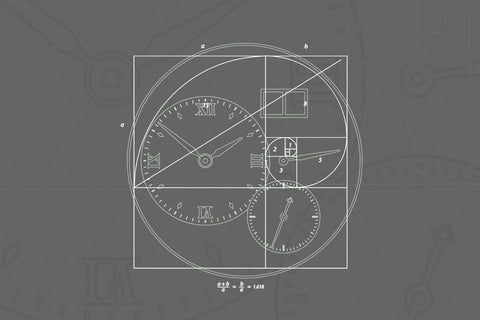Over the course of his 50-year career, Christian Klings has created fewer than 50 watches. He grew up in Dresden, East Germany, which was at the time behind the Iron Curtain, and decided to take up watchmaking as it was one of the rare professions under the Communist government of the day that would allow him to work independently. He attended watchmaking school in 1974, before moving to West Germany, and then California, where he spent 10 years carrying out restoration work. Klings created his first wristwatch in 1996, after a year's work. His original inclination toward independence remains an integral part of his story, as he moved back to Dresden in 2000 and started his own workshop.
A majority of the elements in Klings' watches are made entirely from scratch, and this Tourbillon No. 13 is no exception. Each watch is truly bespoke, as Klings has stated before that he dislikes repeating ideas from previous projects. His commissioning method involves close consultation with his clients to realise the watch's final form. Klings has stated that he has only created 13 tourbillon pieces. The serial numbers on these might not be indicative of the sequence in which they were produced. This particular example, notable for its No. 13 designation, and its status as an overall visual outlier, is believed to be one of the last to emerge from his workshop.
The primary attraction is most definitely the flying tourbillon, with the dial parting, almost as if curtains in a theatre, to reveal it on the lower mainplate. The lyric-shaped tourbillon is designed to make the inner workings of the device as readily visible as possible. It was to this end that Klings mounted the tourbillon, and the flying third wheel that it interacts with, on independent bearings, linked together by a single bridge. The carriage is beautifully crafted, almost exclusively by hand tools of the sort watchmakers in the 19th century would have employed. It is superbly finished too, with beautiful and precise anglage.
Comparable in scale to the tourbillon is the subsidiary dial that hosts the time-telling aspect on the top half of the watch face. The centre of the dial features guilloché that radiates out from where the hour and minute hands are mounted. Around it runs a brushed chapter with engraved Roman numerals, filled in with black lacquer. Even further out is a chapter of drilled minutes, finished in a similar shade. The Breguet-style hands are heat-blued. Framing the dial is a ribbon-pattern, billowing from the centre.
The rectangular shape of the watch is especially unusual, as Klings' watches have historically been round. The case for this watch was created by Kari Voutilainen, according to a design imagined by Klings. It is slim and mirror polished, with the rounded edges lending an organic quality to an otherwise geometric form. The lugs, teardrop in profile, bring to mind the sort of joinery found in elegant Mid-century modern furniture. They are substantial but short, not furthering the overall footprint of the case. The overall case is reminiscent in some ways of Voutilainen’s own Chronomètre 27.
Visible through the sapphire is the manual winding calibre. Front and centre is the large mainspring barrel, partially hidden by the rim of the caseback. The tourbillon too is similarly visually curtailed. The three-quarter bridge, with traditional Saxon frosted finishing, bears Kling’s signature wave edge, with sharp anglage. There is a pleasing symmetry to the architecture, with the wheel of the keyless works finding its counterpart in a circular plaque with the maker’s name and the serial number for the piece. The finishing is exceptional, with wheels featuring precise and even inward angles.
Klings’ name rightly inspires intrigue, fascination and respect in watchmaking as well as in the niche corners of the collecting community familiar with his small but formidable body of work. He is admired for staying true to his artful philosophy and the ambitious and complex projects he favoured over scaling his business by meeting the predictable demands of the industry. His exceptional pieces, that are only just finding a wider audience, speak to his dedication to doing things a certain way. Unfortunately, Christian has made it known that he will be retiring from watchmaking after completing his current outstanding projects and orders. We wish him all the very best.












































































































































































































